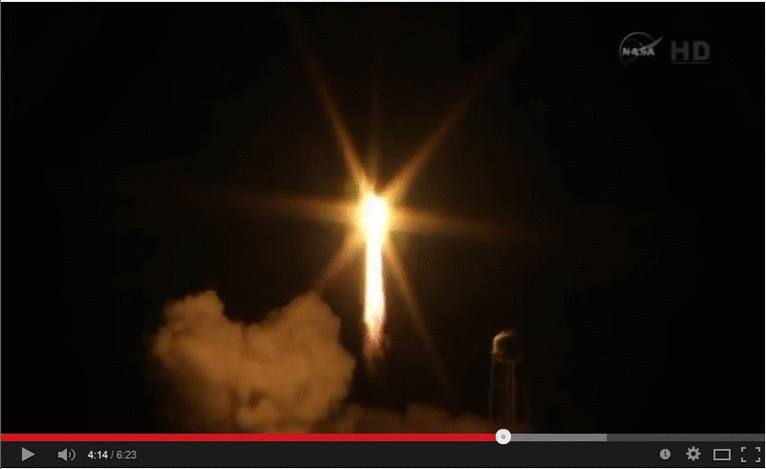The explosion of the Antares rocket carrying the ISS supplies on 10/28/2014 was a great disappointment, and a severe setback for the U.S. space program.
Nevertheless, it gets my sleuthing instinct up, which in this case involves some real background study on the Antares rocket.
Also, we have the development in the News of the idea, or “meme” if you will, that the “explosion” was due to a destruct signal.
This idea, which is quite typical of news developments, is distressing to me. It all hinges on rhetoric. In this case the rhetoric of the “kill signal” sent by the range safety officer, and also the identification of “the explosion” resulting thereto.
First reports of the destruct command gave the bare facts, that the range saftey officer had initiated it “before the rocket hit the ground”, but the report I read gave the specific qualification that it was not certain whether this signal accounted for the explosion.
By appearances, the authority of the range safety officer has prevailed in the news reports, so that we are now informed that the rocket “was destroyed in a massive explosion at the launch site after safety officers sent a kill signal.”
Against this idea, we may note that there were at least two explosions. An immediate explosion, apparently of an engine, within one second of the first visible anomaly, and the more famous and spectacular explosion as the rocket fell back to the launch pad. This second explosion is what is being promulgated in the news reports.
Here is an animated gif made from a rough division of the launch video obtained by “double taps” at my terminal. It spans approximately 2 seconds, as timed by the video.

Well, it simply defies credulity that the apparent explosion at the base of the rocket, in the vicinity of the engines ( there are two of them ) was initiated by a manual signal after the observation of the anomalous “flare” of the rocket plume. In fact, the “108 %” announcement is made right at this time, and verbal acknowledgement of the disaster is rather delayed.
So all I’m saying is that the 2 second interval labeled 4:14 thru 4:15 in this video is a true record of the “accident” itself. I don’t think this is particulary controversial, outside of the impression given by the news reports.
So then the question is, what happened? The flare indicates to me that there was a breach in the LOX circulation through the bell. Aside from the flare, this would have caused a drop in pressure, obviously, in the LOX feed to the engine, and to the turbine driving the pump. So things go south real fast with the flame front going “upstream” into the engine.
My conviction is that there are more than a few individuals on the development Orbital Sciences staff that knew immediately what had happened. The company has stated that the facts will be known in “days not weeks”, so any day now …
